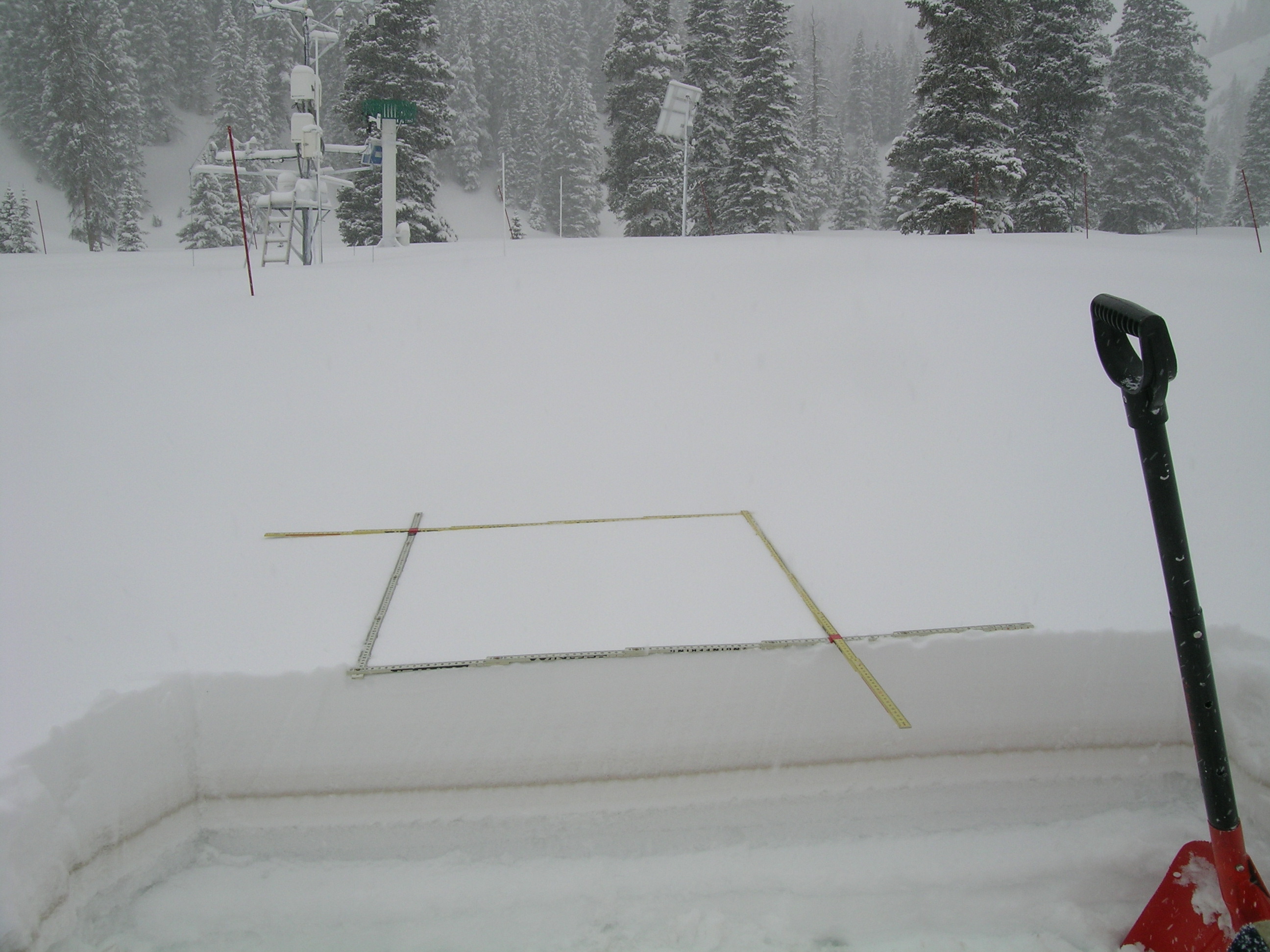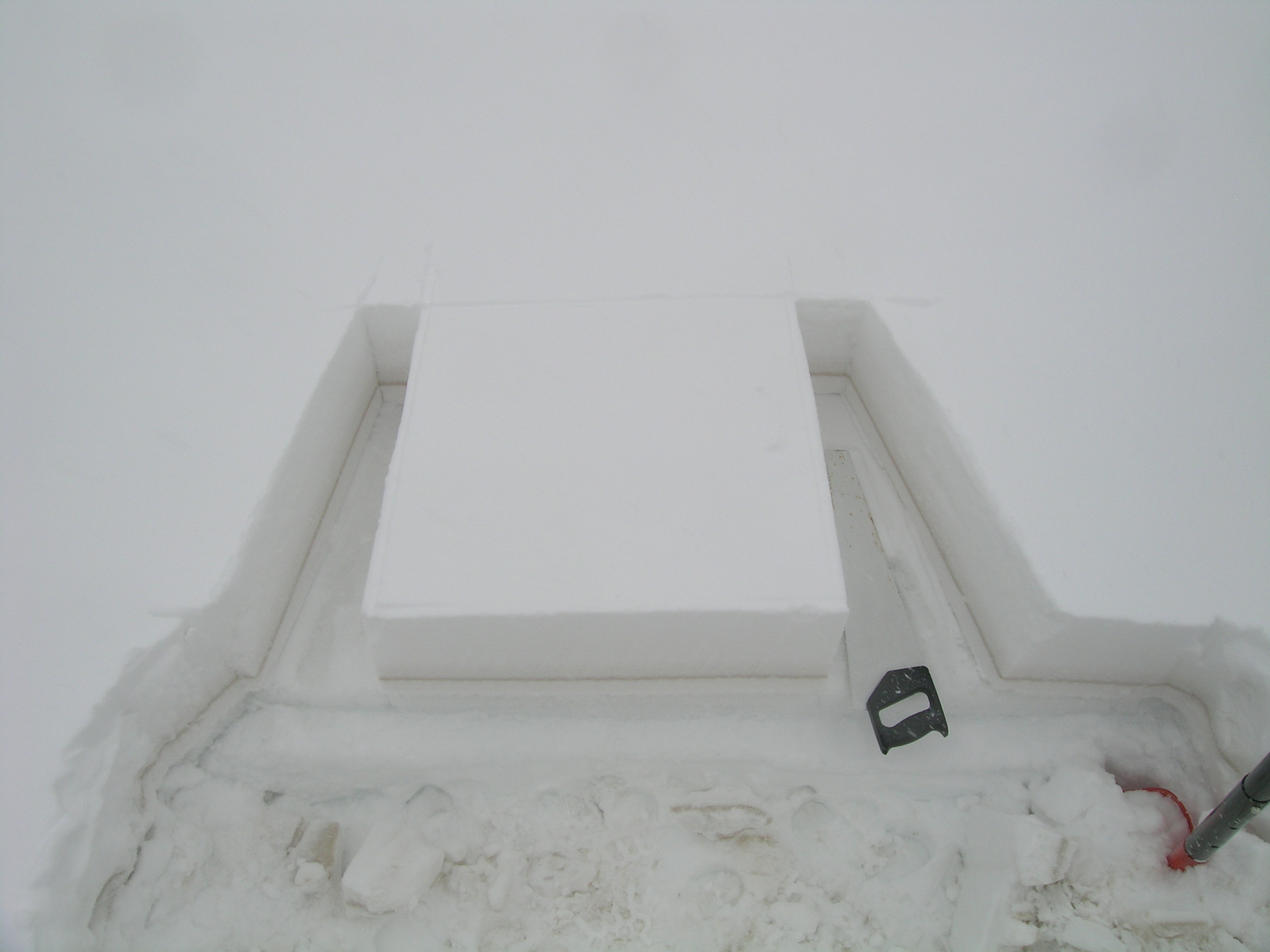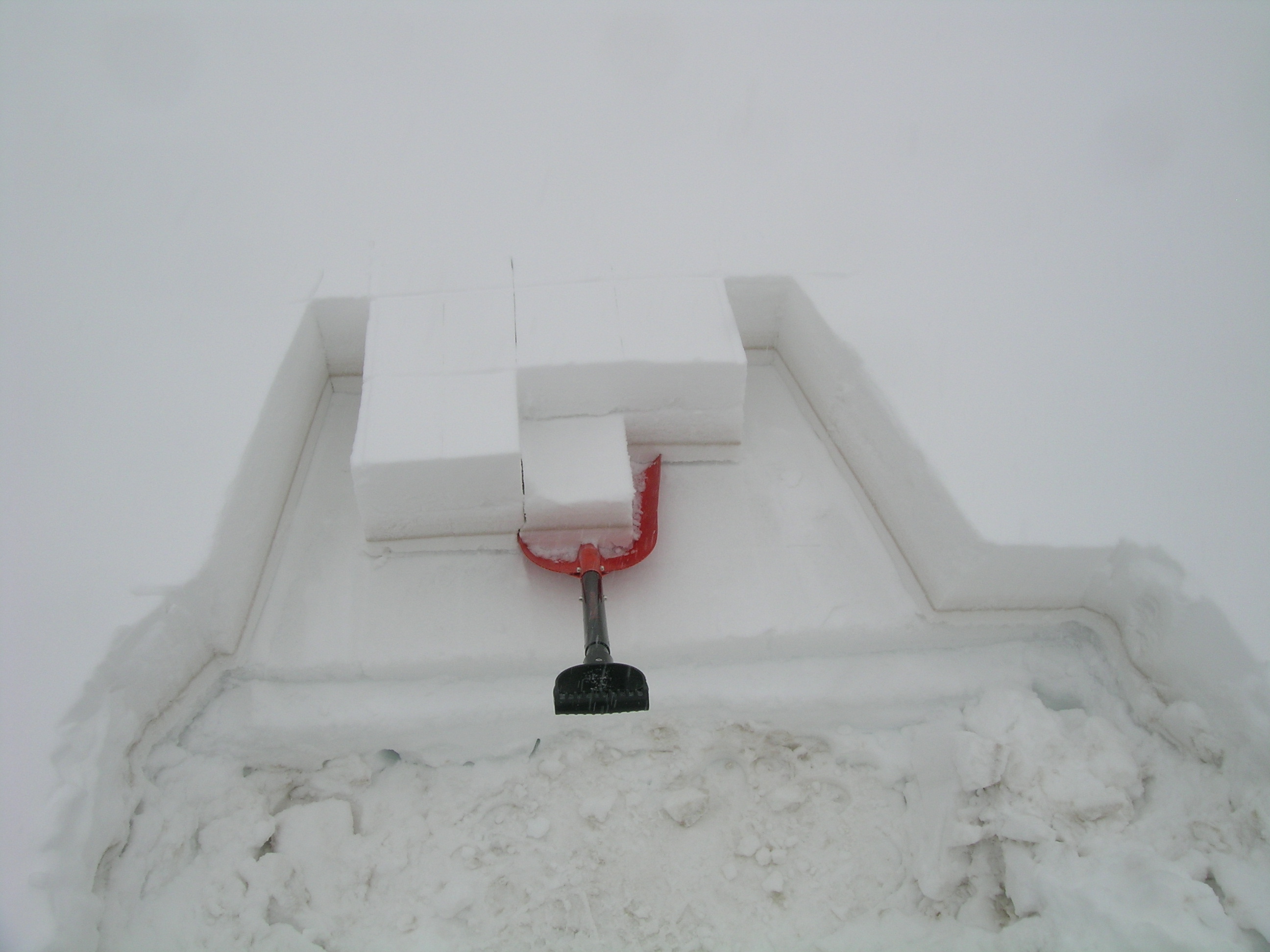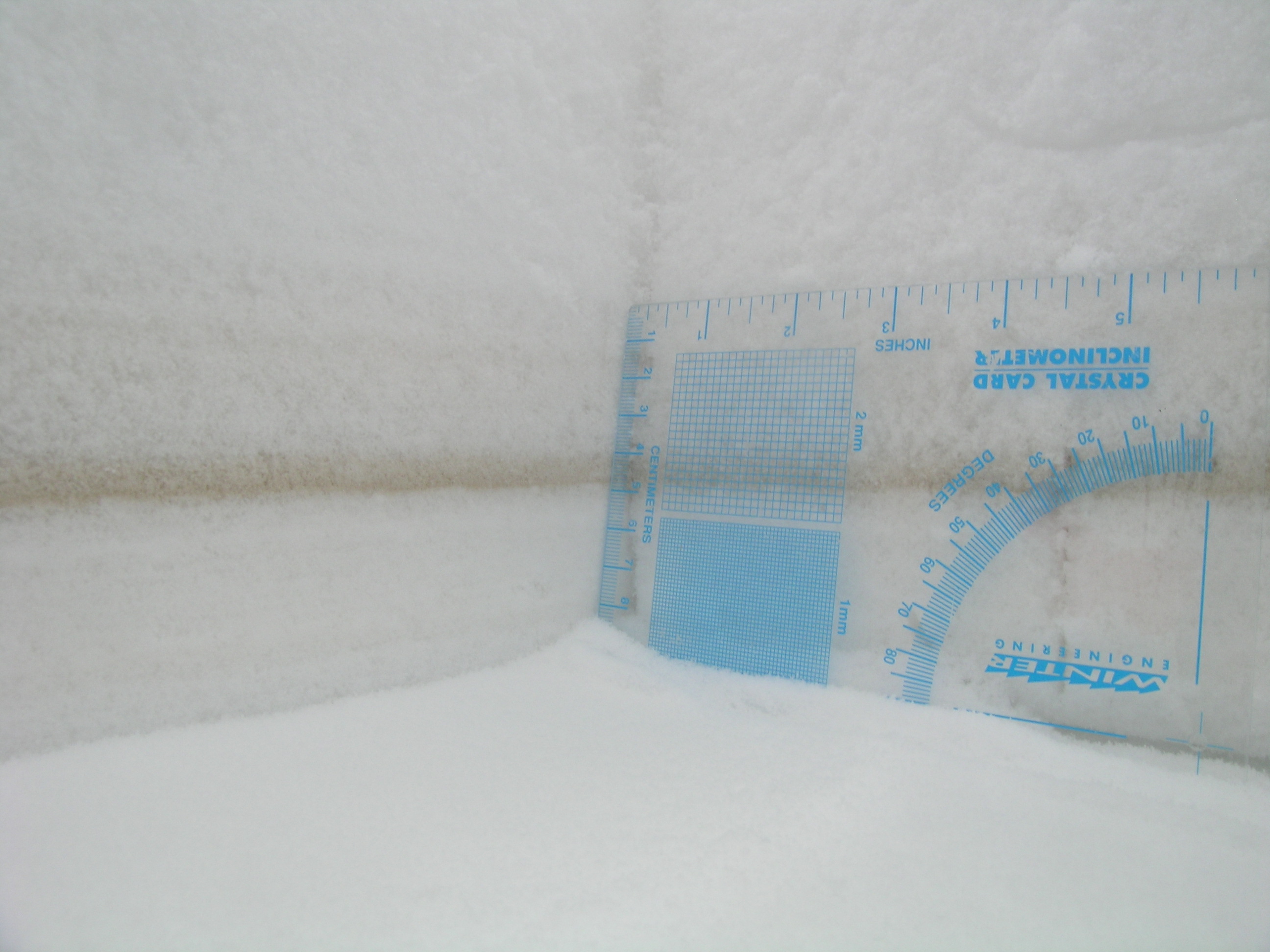CODOS Update - D6 a major deposition, many reports
Good afternoon from Silverton. We've just returned from CSAS's Swamp Angel Study Plot at Senator Beck Basin where we collected our 0.5 m2 sample of dust layer D6, our mass loading sample, and a concentrated sample of the dust for USGS, for chemical analyses.
D6-WY2013 was, as the sky yesterday foretold, a major dust-on-snow deposition. The photos below show the 0.5 m2 sample being collected this morning. Happily, this dust layer was separated from the older D5 layer by a thin band of clean snow, so this was a 'discrete sample' of D6. It's been many years, perhaps since early April 2009, since we've seen such a heavy deposition of dust in a single event. Below is the wind rose for this dust storm showing start/end times and wind speed/direction:


The 0.5 m2 sample is marked on the snow surface. This sample of D6 consisted of the snow just below the obvious dark, down to the old D5 melt/freeze crust just below a very thin band of clean, white snow, as well as all of the snow above the dark band, to the surface. This new snow 'slab' contained very nearly 1" of water.

The sample is isolated from surrounding snow.

The sample is collected in small bites and bagged in large trash bags. This large sample had to be transported back to the vehicle in two separate, triple bagged portions.

This close-up shows the corner of our sampling area, after removal of the sample. The card rests on the old D5 melt/freeze crust. The D6 layer was at least 10 cm thick, and exhibited some banding above and below the thick band in the center, reflecting variations in deposition rates.
Thanks to the many of you who sent along your own observations of the D6 event, as summarized below (as of this writing, at 1:30 Tuesday):
- Craig Sterbenz, Telluride Ski Patrol: "raining mud @ TEX 9,200'"
- Frank Kugel, UGRWCD - raining mud in South Park and Gunnison
- Jim Pokrandt, CRWCD - dirty rain on windshield in Glenwood
- Mike Berry, TCWCD - rained dirt in Montrose
- John Imhoff, TCWCD - mud in the Ouray pool
- Scott Toepfer, CAIC - CAIC observers reported dust at Wolf Creek, Aspen
- Other reports: raining mud in Durango and ferocious blowing dust, major dust at Gothic
The CSAS crew will head out for a full circuit of our ten other CODOS sites on Thursday morning. We'll do our best to have our results posted Monday.
Chris Landry, Executive Director
clandry@snowstudies.org
Center for Snow and Avalanche Studies
PO Box 190, Silverton, CO 81433 USA
(970) 387-5080
www.snowstudies.org

![]()


